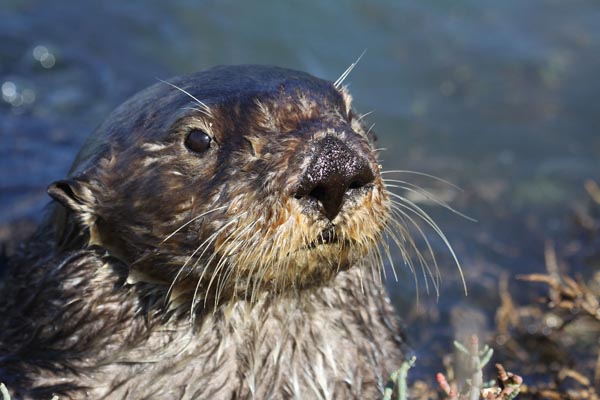Man sentenced for shooting sea otter pup with air rifle

Once hunted for their pelts, Southern sea otters are listed as federally threatened under the Endangered Species Act.
Richard Niswonger said to police that he was tired of hearing the young otter cry
–A California man has been sentenced to 150 hours of community service, a $500 fine, and six months of probation, following intentional harassment of a southern sea otter in Moss Landing, according to the United States Fish and Wildlife Service. Richard Niswonger, 71, of Moss Landing, pleaded guilty and was sentenced for harassing a federally threatened southern sea otter, a violation of the Endangered Species Act.
In Dec. 2014, state and federal authorities responded to a report of Niswonger discharging an air rifle in the direction of and at southern sea otters at Moss Landing Harbor along the central California coast. Niswonger confessed to law enforcement officers that the otter pup had been crying for weeks and that he was tired and annoyed from having to hear it. Witnesses heard the young sea otter crying the evening of the incident, and saw Niswonger aim and shoot at the sea otter. In May 2015, Niswonger was charged, and in September 2015 he pleaded guilty to knowingly harassing a southern sea otter by shooting his air rifle in its direction.
Under the ESA, it is unlawful for any person to “take” any federally threatened or endangered fish or wildlife species without special permitting. “Take” is defined by the ESA as to harass, harm, pursue, hunt, shoot, wound, kill, trap, capture, or collect, or to attempt to engage in any such conduct.
Following the sentencing, Jill Birchell, Special Agent in Charge for the Pacific Southwest Region of the U.S. Fish and Wildlife Service Office of Law Enforcement, said, “We are pleased with the outcome of this case. Harassing federally threatened or endangered wildlife is a crime. People should be aware that their actions, whether intentional or not, can have significant consequences to sea otters and could lead to federal charges.”
The case was the result of an investigation by the U.S. Fish and Wildlife Service and the California Department of Fish and Wildlife. It was prosecuted by Assistant U.S. Attorney Jonas Lerman, of the United States Attorney’s Office for the Northern District of California.
Sea otters can be found in nearshore areas along the California, Washington and Alaska coasts, including areas of high human activity, such as harbors. In addition to ESA protection, southern sea otters are also protected under the Marine Mammal Protection Act, which prohibits harassing, hunting, capturing, or killing marine mammals. Approaching a sea otter so closely that it changes its behavior may constitute a violation of this law.
Southern sea otters were listed as federally threatened under the Endangered Species Act in 1977. During the 18th and 19th centuries, sea otters were hunted for their pelts, and by the early 1900s, the species was believed to be extinct in California. A remnant colony was discovered along the Big Sur coast in the 1930s, and the current California population has grown from the slow expansion of that colony to around 3,000 individuals. The California population prior to exploitation is thought to have numbered about 16,000 animals.




















